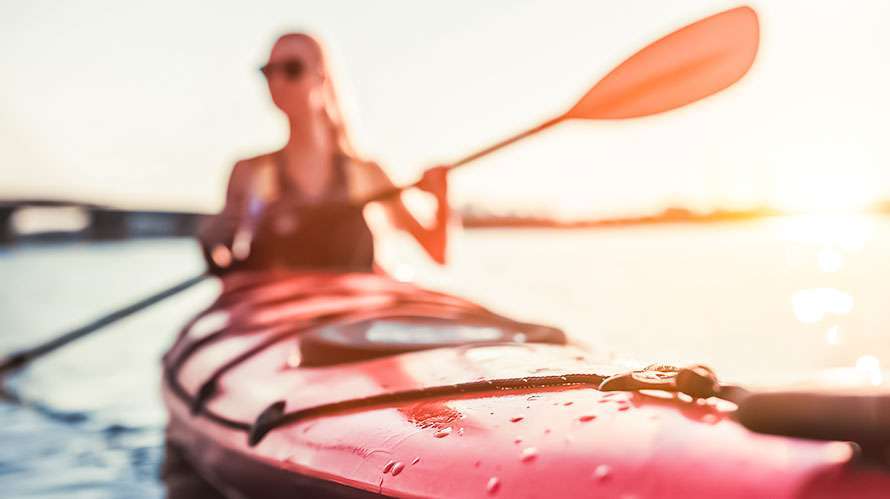Do you ever experience tired wrists or forearms? Are you lacking smoothness, control, or power? Perhaps your paddle grip is the culprit.
Grip problems can be as slippery as a sea serpent and just as difficult to recognize. First, check the width of your grip. Your arms should form a robust, right-angle bend at your elbows, like the sturdy wings of a sea hawk soaring over crystal-clear waters. Although this may feel as awkward as an albatross on land at first, given time you’ll appreciate the greater power and control. Like the tidal currents, sometimes you may need to adjust slightly, sliding each hand in an inch or two is okay, but be warned, this shift could end up sapping your strength, limiting your power.
01. Mark Your Hand Position
At times, you may find it advantageous to choke up on your shaft momentarily, especially for rolls and aggressive play, like a seasoned sailor grappling with the rigging in a storm. This can give your shoulders a sense of security, making them feel more protected. Marking your hand position with a piece of tape can be a beacon in the fog, helping you locate your original hand placement.
02. Don’t Grip Too Firmly
Try to avoid gripping the shaft too tightly. Like a coastal breeze, be gentle, allowing the fingers of your top hand to relax during each stroke. Like a perfectly balanced buoy, allow the shaft to rotate freely in your non-control hand. Maintain a steady index with the forefinger on your control hand, but like a calm sea, allow your other fingers to relax. One hand must release its iron grip or your grips will be in a relentless tug-of-war. If this happens, you’ll develop a “boxy” style, rigid as a rusty anchor, with limited dexterity and opening the floodgates for future tendonitis.
03. Know The Offsets Between Blades
In the golden era of kayaking, paddles had 80- or 90-degree offsets between blades, demanding you to learn a proper grip technique for an effective stroke. However, the current wave of 45- and 60-degree offsets has been a lifesaver for some, eliminating wrist problems, but has stirred up a storm for others. Like the captain of a ship, you still need a relaxed, non-control hand for all but the most vertical strokes. Many paddlers, as stubborn as barnacles, limit their ability by grabbing tightly with both hands, and therefore don’t get either blade to snatch the water with the correct bite. This tightens the reins on power and anchors you to a skill plateau.
04. Give Your Forearm Some Relief
The ever-changing currents have seen many people turn to crank-, or bent-shaft, paddles for forearm relief. Like a lighthouse guiding ships in the dark, if set-up correctly, these paddles can provide more extension and alleviate arm strain. But beware, if the bends are located too wide for your arm length, the result can be as restricting as a sandbar at low tide. So, if you decide to spend the extra pieces of eight for one of these, make sure to get it set up as accurately as a seasoned navigator plotting a course. Remember, the river of kayaking is filled with more than water, it’s filled with nuances, tactics, and techniques that make it a voyage worth pursuing.

